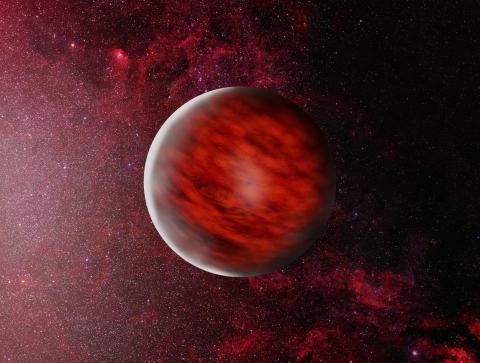NASA's planet-finding project called 'The Backyard Worlds: Planet 9' just saw one the of "reddest" objects ever seen in space thanks to the keen vision of its volunteers!

NASA's planet-finding project The Backyard Worlds: Planet 9 found a space object similar to Jupiter with the reddest "colors" ever observed for such objects. The object was given the nickname CWISE 0506. It is a brown dwarf or a ball of gas that is not big enough to be a star. It also travels alone through space about 100 light years from the Sun.
Reddest Free-Floating Brown Dwarf
It is important that "color" is associated with wavelengths of light that are not visible to the naked eye. But in space terms, the color red indicates that the object is brighter at longer wavelengths and dim at shorter wavelengths, as explained by NASA.
The Planet 9 project found an extremely red object called CWISE 0506. It is a brown dwarf or a ball of gas that is too small to be considered a star. It is a free-floating, independent object traversing through space around 100 light years from the Sun.
The science team behind the project rendered the object's red color as a clear indication of an extremely young and cloudy brown dwarf. NASA said these qualities would suggest that it has a mass only a few times that of Jupiter.
According to NASA, this discovery should aid in the understanding of the formation and evolution of free-floating planetary-mass objects and serve as a special laboratory for the investigation of objects with peculiar cloud characteristics.
Failed Stars
The size of a brown dwarf is somewhere between that of a tiny star and a big planet like Jupiter. The majority of astronomers designate an object as a brown dwarf if its mass is between 15 and 75 times that of Jupiter.
Many scientists also refer to brown dwarfs as "failed stars" since their masses are not conducive to sustaining the fusion of hydrogen, which is normally seen in a regular star.
A few neighboring brown dwarfs have been found by astronomers since 1995. A binary system contains each of the brown dwarfs that have been found so far.
A binary system is one in which two stars revolve around one another, similar to how our solar system's planets revolve around the Sun.
According to experts, brown dwarfs may make up a significant portion of the universe's mass, and given that they emit little light, they may contribute to the "missing mass" problem that cosmology is currently grappling with.
The Backyard Worlds: Planet 9 project searches our solar system's furthest reaches and beyond for objects using infrared photos. By visiting www.backyardworlds.org, you can also contribute to the discoveries being made in our galaxy's backyard.
Related Article: NASA's Hubble Space Telescope Captures 'Butterfly Nebula' In Stunning Motion | Fun Facts About This Beautiful Space Butterfly










